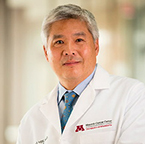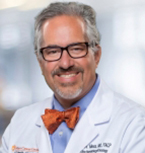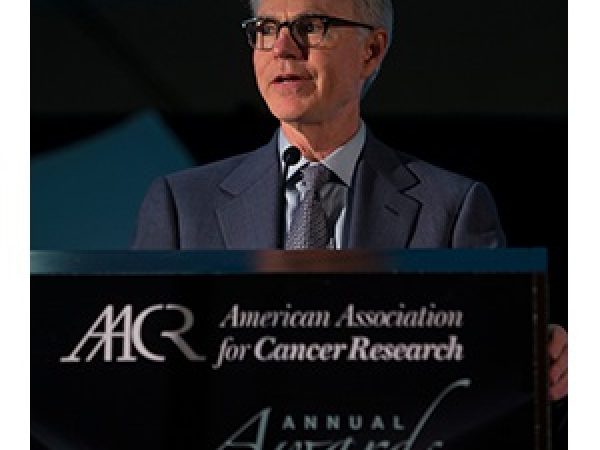AACR and AACI Collaborate to Advocate for Cancer Research Funding
The effects of the coronavirus pandemic have rippled through the entire cancer community, from individual patients to the world’s leading cancer research centers. While patients and staffers are making a gradual return to the cancer centers, many are grappling with the fallout from months of canceled appointments and postponed clinical trials and research projects.
Federal funding could help cancer centers rebuild from the devastating effects of the pandemic, according to many of the participants in last month’s Joint Hill Day, a collaboration between the American Association for Cancer Research (AACR) and the Association of American Cancer Institutes (AACI). In a full day of virtual meetings, representatives of the AACR and AACI joined nearly 100 cancer center leaders, patient advocates, physician-scientists, and others in asking lawmakers to help secure funding for the National Institutes of Health (NIH) and National Cancer Institute (NCI). Funding for these organizations ultimately supports the lifesaving cancer research that occurs at cancer centers throughout the United States.
Key requests from the Joint Hill Day participants were:
- Continue to prioritize funding for medical research in the regular appropriations process and provide at least $46.1 billion (a $3.2 billion increase) for the NIH in fiscal year 2022.
- Provide at least $7.6 billion (a $1.1 billion increase) for the NCI in fiscal year 2022, as supported by the NCI Director’s professional judgment budget.
- Provide at least $10 billion for the NIH in emergency supplemental funding to restart research and clinical trials that have been impacted by the pandemic.
In opening remarks at the virtual Hill Day program, the presidents of the AACR and the AACI explained that strong funding for the NIH and NCI is critical in order to sustain the pace of progress against cancer.
“The funding that NCI provides to the NCI-designated cancer centers that are located all throughout the country is supporting pioneering new research, serving patients in their communities, and training the next generation of cancer scientists,” said AACR President David A. Tuveson, MD, PhD, FAACR. Tuveson is the director of the Cold Spring Harbor Laboratory Cancer Center.
“Federal funding through the NIH and NCI is the lifeblood of the cancer research and training programs implemented by the cancer centers. Our continued progress against cancer depends heavily on these investments,” added Caryn Lerman, PhD, president of the AACI and director of the USC Norris Comprehensive Cancer Center at the University of Southern California.
Three of the cancer center leaders who participated in the Joint Hill Day spoke with Cancer Research Catalyst about how federal funding can make a difference in the wake of the coronavirus pandemic. Thanks to Douglas Yee, MD, director of the Masonic Cancer Center at the University of Minnesota; Ruben A. Mesa, MD, executive director of the Mays Cancer Center at UT Health San Antonio MD Anderson; and Sheila Stewart, PhD, associate director for basic sciences at the Siteman Cancer Center at Washington University of St. Louis, for their perspective.
Cancer Research Catalyst: How does federal funding impact the day-to-day and long-term operations of a cancer center?

Yee: Federal funding is critical to ensure support of faculty leadership and key staff who are responsible for maintaining and managing sophisticated shared resources. Funding allows patients to partner with us in clinical research by enrolling in clinical trials. We also use federal support to maintain an active community outreach and engagement office. Finally, developmental funds for new faculty hiring and pilot projects are supported by federal funding.
Mesa: Federal funding is essential to help support the critical infrastructure to conduct crucial lifesaving clinical trials and to help support essential shared resources and personnel to help advance cancer research. Additionally, federal grants provide critical funding for individual scientists to be able to test an idea and develop the idea in cancer prevention, screening, treatment, and survivorship research.
Stewart: Federal funding is the bedrock on which our cancer centers are built. The basic science and early-stage investigator-initiated trials would just not happen without said dollars. Our efforts to reach our catchment would also not be possible without the federal support.
Cancer Research Catalyst: How has the COVID-19 pandemic impacted your cancer center? What needs do you see as you work toward returning to “normal” operations?
Yee: COVID-19 restrictions resulted in a “pause” on almost all research activity for four to six months. Federally funded grants continued to pay employees, but some of the research—in the laboratory and clinic—was not progressing due to these restrictions. Only “essential” research was allowed. Because of this, we anticipate gaps in funding of research as there is now a discrepancy between research personnel budgets and supply/assay budgets. The emergency relief package could be used to address this budget shortfall.
Also, we have noted an increase in patients presenting with later stage cancers and an increased eligibility in several of the clinical trials we manage. To meet these needs, we will also need more clinical trials office research staff.

Mesa: COVID-19 had many impacts on our patients, faculty, and staff, personally and professionally. It certainly has lengthened the time to accrue patients onto clinical trials. It also increased staff turnover, which we are working to rectify post-pandemic. It also became more difficult to procure research supplies. Additional resources are crucial to regain the momentum lost in cancer research.
Stewart: We scaled back all of our operations to a near standstill in the labs and we are just now getting close to having our system up and running. While I am happy to say our clinicians made a herculean effort to keep treatments on schedule with great success, our clinical trials and efforts to engage our catchment took a serious hit. Even now, we are not back to where we were with community engagement.
Cancer Research Catalyst: How was your message received by lawmakers and/or their staff members?
Yee: My key takeaway in meeting with the legislators is they are fully supportive of the appropriations outlined under the President’s budget. I did not get a strong feeling that emergency relief funding was high on their priority list.

Mesa: My key takeaway is that lawmakers and the cancer community are united in the recognition that cancer is a burden across society, a burden that can only be overcome by teamwork, hard work, and essential federal funding to advance cancer research.
Stewart: In the virtual environment, it’s a bit of a challenge to know how your message is being received. However, I’m optimistic that the lawmakers gained an understanding of how federal funding affects cancer center operations.



